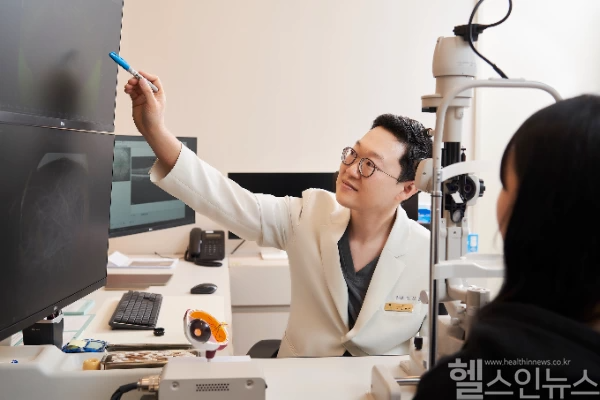By KIM Sangwon, M.D., Director of YONSEI SUNGMO EYE CLINIC

For generations, diseases affecting the retina – the light-sensitive tissue responsible for converting visual information into signals the brain can interpret – were primarily associated with aging. Conditions like macular degeneration and diabetic retinopathy were considered problems of the elderly, typically affecting those over 60. This long-standing pattern, however, is showing signs of a disturbing shift.
"We're seeing younger patients with symptoms that were once almost exclusively reported by their grandparents," notes Dr. Kim Sangwon, director of YONSEI SUNGMO EYE CLINIC. These symptoms include blurred vision, visual distortion, reduced acuity, and floaters – dark specks that drift across one's field of vision.
The culprit behind this trend appears to be our daily companions: smartphones that many use for several hours each day, often in less-than-ideal conditions.
The relationship between smartphone use and retinal damage is multifaceted. Sustained focus on close objects strains the eye's musculature, but the more significant concern lies with blue light – high-energy visible light with wavelengths just longer than ultraviolet radiation. When exposed to blue light in evening hours, the body suppresses melatonin production, disrupting sleep cycles. Emerging research suggests that prolonged exposure may also inflict cumulative damage to retinal cells.
What makes this particularly concerning is how most people use their devices. "Using smartphones in dark environments creates a perfect storm for retinal stress," explains Dr. Kim. In darkness, pupils dilate to capture more light. When a bright screen is viewed at close range under these conditions, an intense concentration of blue light reaches the retina directly through the enlarged pupil, maximizing potential harm.
This habit also accelerates the progression of myopia (nearsightedness), which itself serves as a significant risk factor for severe retinal complications including detachment and certain forms of macular degeneration. The correlation is particularly alarming given that high myopia rates have been climbing globally, especially in East Asian countries.
While completely abandoning smartphones is neither realistic nor necessary, protecting eye health requires deliberate habits. "The simplest rule is to always use your phone in well-lit environments," Dr. Kim advises. He recommends keeping ambient lights on, adjusting screen brightness to match surrounding light levels, and increasing font size to reduce strain.
Additionally, the "20-20-20 rule" can provide relief: every 20 minutes, look at something 20 feet away for at least 20 seconds to relax the focusing muscles. Conscious blinking helps maintain the eye's protective tear film, preventing dryness and irritation.
Perhaps most crucial is regular professional monitoring. Unlike many health conditions with obvious early warning signs, retinal disorders often progress silently until significant damage has occurred. By the time symptoms become noticeable in daily life – when reading becomes difficult or straight lines appear wavy – the condition may be well-advanced.
"Retinal changes that could indicate early disease are typically microscopic and require specialized equipment to detect," says Dr. Kim. "Regular comprehensive eye examinations remain the most effective way to identify problems before they compromise vision."
The integration of smartphones into virtually every aspect of modern life appears irreversible, but the potential consequences for vision health, particularly among younger generations, demand attention. Through mindful usage habits and preventive care, it's possible to embrace digital convenience while protecting one of our most precious senses.
(This article by Dr. KIM Sangwon, Director of YONSEI SUNGMO EYE CLINIC)
Health In News, medikorea
press@healthinnews.co.kr






